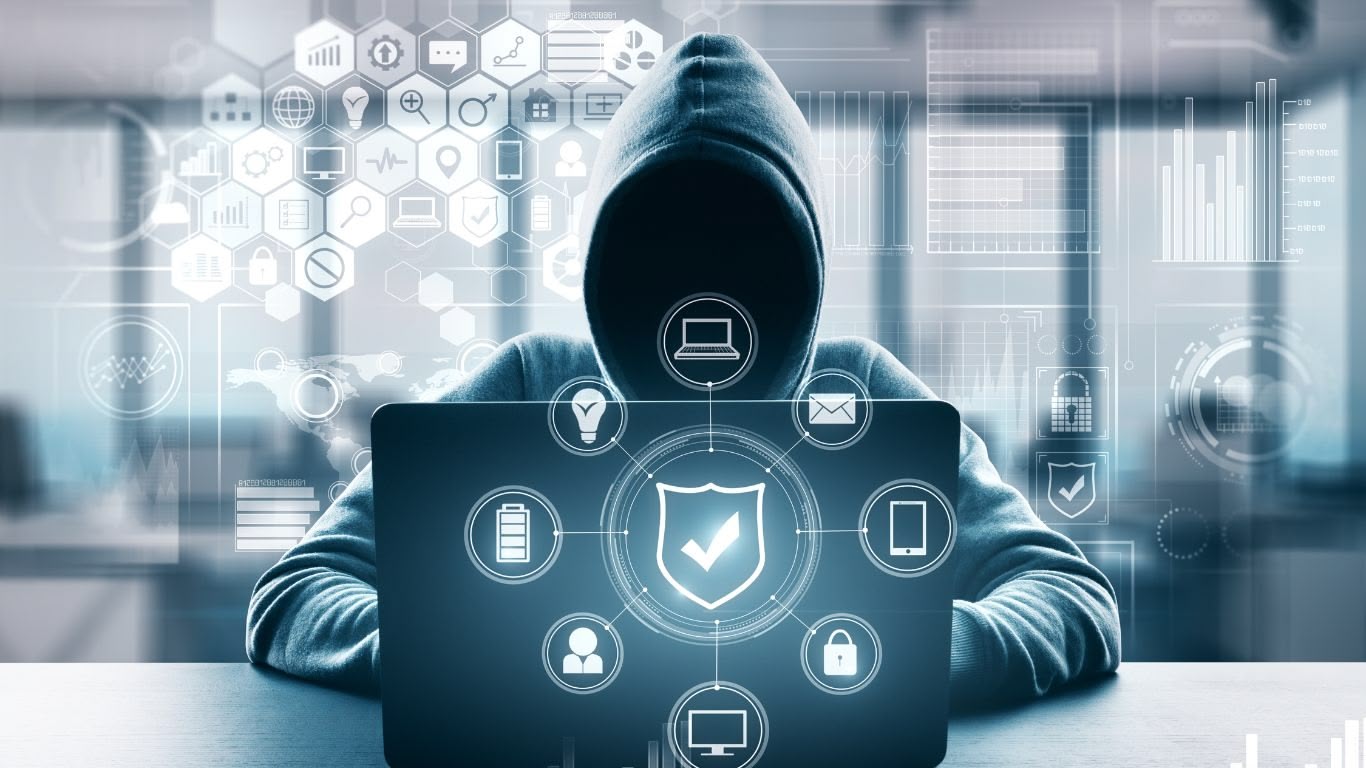Public Wi-Fi is like an open window, extensive to your private info. Anybody with the correct instruments can peek in — or worse, break in. But, we proceed utilizing it with out safety. The excellent news? You received’t have to shell out for costly apps or tech devices. This text will verify and clarify how you can keep secure totally free..
Why Public Wi-Fi is Harmful
Earlier than we unveil options, let’s dissect the lurking risks.
Public Wi-Fi networks usually lack encryption or make the most of flimsy safety measures. This obvious vulnerability makes it a haven for cybercriminals.
1. Lack of Encryption
Most public hotspots skip sturdy encryption protocols, and a few skip it totally. Encryption is your digital lock, scrambling your knowledge from prying eyes. With out it, your on-line actions are ripe for interception.
Checking e-mail? Social media browsing? On-line buying? Delicate knowledge like usernames and passwords journey via the ether unprotected — an open buffet for hackers to feast upon.
2. Man-in-the-Center (MITM) Assaults
Enter the Man-in-the-Center assault, a typical public Wi-Fi risk. Right here, hackers expertly place themselves between you and your supposed server. You suppose you’re navigating to a trusted web site, however their claws are snagging all the pieces in transit.
Think about logging into your checking account or e-mail, and your credentials vanish into skinny air. It’s like handing a sealed letter to a stranger who critiques it earlier than sending it alongside.
3. Rogue Hotspots or Evil Twin Networks
Be careful for rogue hotspots or evil twin networks! Hackers craft convincing facades that resemble official Wi-Fi connections. Names like “Free_Cafe_WiFi” or “Airport_Guest_Network” might lure you in.
Connect with considered one of these mirages, and out of the blue, your each motion is beneath watchful eyes. Hackers may even redirect you to phishing pages, harvesting your passwords and private knowledge whenever you log in.
Beware! Many gadgets auto-connect to recognized networks, which means your gadget may unwittingly clasp arms with a malicious hotspot.
4. Session Hijacking
When you log right into a web site, a “session” materializes — a digital handshake between you and the server. If a hacker hijacks this session (through session side-jacking), they will impersonate you, breaching your accounts with out realizing your password.
Utilizing on-line instruments so simple as pie, they glide in, sending messages or stealing non-public info.
5. Packet Sniffing and Information Interception
Each morsel of information you transmit over unprotected Wi-Fi travels as tiny items referred to as packets. Hackers brandish packet sniffers to gather and scrutinize your info.
Think about somebody piecing collectively a puzzle from scattered items you’re sending. Collect sufficient packets, and so they reveal your emails, chats, internet visits, and even login credentials.
This risk will increase when accessing unencrypted web sites (these beginning with http://), which spill out packets in plain view.
6. Malware Injection

Public Wi-Fi doesn’t merely invite knowledge theft; it may also be a conduit for malware infections. Hackers exploit your machine’s vulnerabilities, sneaking in viruses or adware.
This could occur unnoticed, particularly for those who’ve bought outdated software program. As soon as a tool is contaminated, it might open the gates to hackers lurking for private information or webcams.
Some attackers use a tactic known as ARP spoofing, guiding your visitors towards malicious websites that ship malware with ease.
7. Community Snooping by Curious Strangers
Not all spies are expert hackers; typically, an inquisitive onlooker seizes the day. Anybody tech-savvy can seize free instruments to observe open networks, even a intelligent teenager.
With out safety, these people may see:
- Your visited web sites,
- Your typed messages,
- The information you add or obtain,
- Your social media and e-mail exercise.
Even with harmless intentions, it’s a flagrant invasion of your privateness.
8. Danger to Related Units
Connecting your cellphone or laptop computer to public Wi-Fi poses the danger of shared file entry. Different customers may doubtlessly rummage via your machine’s folders, particularly if file-sharing is enabled.
Even scarier, in case your machine permits incoming connections, you may change into a goal for distant assaults — giving hackers a free journey to your knowledge.
9. False Sense of Safety
We frequently affiliate busy areas like cafes and airports with security, which might be deceptive. That’s the grand phantasm — the masks of safety.
Cyber threats thrive not in darkness, however proper beneath shiny lights. Anybody on the identical community, even only a desk away, might be filching your knowledge silently. In contrast to a pickpocket, they depart no fast hint.
10. Focused Assaults and Private Information Theft
If somebody is monitoring you—like in instances of stalking or company espionage—they could exploit public Wi-Fi to observe your actions. They’ll monitor your location, snag messages, and entry cloud-stored knowledge.
This risk isn’t random; typically it’s deeply private.
Protecting Measures
1. Stick with HTTPS Web sites
Whereas looking public Wi-Fi, hunt down web sites that start with “https://” reasonably than “http://”. The “S” indicators a safe connection, encrypting the information exchanged between you and the location.
For comfort, contemplate putting in the HTTPS All over the place extension. It routinely saves you with safe variations of websites at any time when doable. Free and efficient for Chrome, Firefox, and Opera!
Fast Tip: By no means enter passwords or delicate information on non-HTTPS web sites.
2. Use a Free VPN (However Be Sensible About It)
A VPN (Digital Personal Community) acts like a digital cloak, encrypting your web visitors to maintain prying eyes at bay.
A number of free VPNs can present truthful safety. Nonetheless, tread with care — free VPNs comes with some limitations like slower speeds and knowledge logging. They’ll additionally promote your knowledge, resulting in privateness considerations. Moreover, you additionally should take care of restricted server choices, weaker encryption, and bandwidth caps.
Go for respected free VPNs like ProtonVPN or Windscribe for a safe connection with out spending – however keep away from shady apps with unhealthy critiques.
Professional Tip: Keep away from downloading VPNs from third-party websites; all the time use official app shops.
3. Flip Off Sharing Settings
Sharing choices is perhaps useful on non-public networks, however in public, they’re like leaving your entrance door extensive open.
To lock issues down, right here’s what to do:
- Home windows: Go to Management Panel → Community and Sharing Heart → Change Superior Sharing Settings → Flip off file and printer sharing.
- Mac: System Preferences → Sharing → Uncheck all choices.
Additionally, render your machine “non-discoverable” so it stays hidden on the community.
4. Allow Your System’s Firewall
A firewall is your safety bouncer, monitoring the information movement to and out of your system. It blocks the unhealthy and lets the great via. Fortunately, most gadgets include one inbuilt. Be sure it’s turned on:
- Home windows: Management Panel > System and Safety > Home windows Defender Firewall
- Mac: System Preferences > Safety & Privateness > Firewall
This free device delivers silent but sturdy safety each time you join.
5. Keep away from Auto-Join and Remembered Networks
Units usually routinely hook up with acquainted networks, creating potential hazards.
Cybercriminals might conjure faux hotspots with names resembling trusted connections, tricking your machine into connecting.
To disable auto-connect:
- iPhone/iPad: Settings → Wi-Fi → Faucet the “i” subsequent to the community → Flip off “Auto-Be a part of.”
- Android: Settings → Community & Web → Wi-Fi → Faucet the community → Disable auto-connect.
- Laptops: Go into Wi-Fi settings and “Neglect” any beforehand used public networks.
6. Preserve Your Software program and Apps Up to date
Delaying software program updates leaves your machine uncovered to vulnerabilities. Updates usually embrace essential safety patches.
Allow automated updates for:
- Working techniques (Home windows, macOS, Android, iOS),
- Net browsers (Chrome, Firefox, Safari),
- Antivirus packages,
- Apps, particularly these dealing with delicate information.
These updates price nothing and supply important safety enhancements.
7. Use Two-Issue Authentication (2FA)

Think about somebody nabbing your login credentials. What’s your backup plan?
Enter two-factor authentication (2FA)! This further layer of safety — a code despatched to your cellphone, as an illustration — ensures solely you possibly can enter.
Hottest providers like Gmail and banking apps supply free 2FA choices. Allow them wherever doable.
Even when hackers snag your password, they’ll nonetheless be locked out with out the second verification step.
8. Log Out and Neglect the Community After Use
When ending your public Wi-Fi session, sign off of all accounts and “Neglect” the community to stop future auto-connections.
Restarting your machine may also assist cleanse short-term session knowledge.
These small steps considerably scale back the danger of session hijacking on public networks.
9. Use Safe DNS (Free Possibility)
Your machine depends on a DNS server to translate web site names into IP addresses. On public Wi-Fi, hackers can manipulate these servers to divert you to faux websites.
Shield your self by utilizing a safe DNS supplier like:
- Cloudflare DNS (1.1.1.1)
- Google DNS (8.8.8.8)
Manually set these DNS servers in your machine’s community settings. Cloudflare even has a free cell app for immediate configuration.
It’s a swift, free tactic to defend towards phony websites and phishing traps.
10. Verify for Suspicious Exercise
Even with savvy precautions in place, commonly scrutinizing your accounts is smart.
- Search for uncommon logins or new gadgets.
- Scan your machine for malware utilizing free instruments like Malwarebytes.
- Evaluation financial institution and bank card statements for odd transactions.
Catching one thing early can remodel a minor breach right into a full-blown catastrophe — however provided that you’re vigilant!
Bonus Suggestions: For the Additional Cautious (Nonetheless Free!)
Trying to elevate your digital safety sport? Listed below are just a few savvy steps to contemplate:
- Embrace Visitor Mode or Incognito: Splendid for logging right into a pal’s laptop computer or a public pc.
- Obtain Free Antivirus Software program: Choices like Avast, AVG, or Bitdefender present sturdy free protection.
- Steer Away from Delicate Accounts: If it could possibly wait, keep away from banking or non-public chats on public networks.
Conclusion
All of us crave comfort, however not on the expense of our private fortunes. Public Wi-Fi gives ease — but, it harbors dangers. Fortunately, safety can come at zero price. Now that you understand how to protect your knowledge totally free, the query is: Will you settle for the problem?




